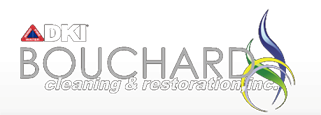How do I get rid of mold?
The answer to this question is a little more complex than you think. the truth is that mold is found everywhere. We bring mold spores indoors on our clothing and shoes and are found in a typical dust sample. This being said, you should understand that you will never entirely get rid of mold, and you wouldn’t want to. Mold is beneficial in many ways. It makes our beer, wine, and cheese break down the leaves in the yard, and makes penicillin. We don’t want to rid a space of mold, but we do want to limit the number of mold spores in an area to a healthy level.
How do I prevent mold growth?
Mold needs moisture to grow and thrive. As we said, mold comes indoors on your clothes and shoes, so all it needs is additional moisture to grow. To prevent mold growth you need to follow these guidelines…
- If a water spill occurs, act quickly. Clean up water within 24-48 hours.
- Clean and repair roof gutters regularly. Ice can back up and melt into your home. This is just one avenue for that excess water to enter your home.
- Make sure the ground slopes away from a building or foundation, otherwise water can pour into basements and into the home.
- Keep air conditioning pans clean. These pans can act as literal Petri dishes for bacteria and mold.
- Keep indoor humidity low. An example of high humidity in your home shows when you have condensation on your windows. To reduce the humidity in a space, simply run a dehumidifier. Heat pumps work extremely well to remove excess moisture from the air.
Can I use bleach to clean the mold up?
Bleach is a great product, but it is not for mold. If you have mold on a hard surface like a counter, you can simply wash it up with soap and water. If it is growing on sheetrock, this is a different story. Mold can root itself into a porous surface so the best method to properly care for mold in this situation is to remove the affected material.
When should I call in a professional to help with mold?
Any time you are uncertain of how to care for a problem, you should ask for help. If the area is smaller than 10 square feet then the EPA says you can probably deal with it on your own. If it is over 10 square feet than it is best to bring in a professional. We will help you identify why the mold is growing, and create a plan for removal. Water can travel within walls, and under floors, so it is best to have these areas checked with equipment such as a moisture meter. Make sure to choose a company that follows the IICRC standards of care for mold remediation and that uses a third-party industrial hygiene consultant for the testing to ensure that the issue has been remediated properly.
What if I just have a small area of mold in my bathroom?
This happens a lot due to improperly vented bathrooms. Bathrooms are a constant source of moisture and humidity and require an efficient way to rid the space of excess moisture. If you find mold in your bathroom and it is a small area(under 10sf), simply wash the area with soap and water and then spray it with white vinegar. The vinegar creates an acid base that the mold does not like to grow back on. However, if you do not fix the moisture issue, the problem will continue to happen. NOTE: Make sure that your bathroom vent is not vented into the attic. This is another source of major mold problems because you are now putting excess moisture into a confined space where mold can thrive.
How do I protect myself?
Health effects: According to the EPA, symptoms other than the allergic and irritant types are not commonly reported as a result of inhaling mold. Some people experience cold or hay fever symptoms when exposed to mold. To prevent exposure and possible symptoms wear an N95 mask when raking leaves, dusting, or entering an area that may contain mold.
Something to think about…
We are building homes more airtight. More efficient, well-built homes with lower air exchange rates mean that less moisture is leaving the home. The typical home produces moisture on a regular basis with laundry, steam from showers, dishes, and occupant respiration. We generate 2-3 gallons of moisture a day! You only need one gallon of water to raise an 1800 SF area to 35% humidity at 70 degrees to 100% relative humidity. To put this in perspective, your home’s relative humidity level should be between 30-50%. To help keep those levels in check, simply run your heat pump or a dehumidifier if you have issues such as condensation on windows inside your home.
NOTE: Contact your insurance agent to find out if your homeowner’s policy includes mold coverage. Not all policies include coverage for mold, and many have limited coverage.










